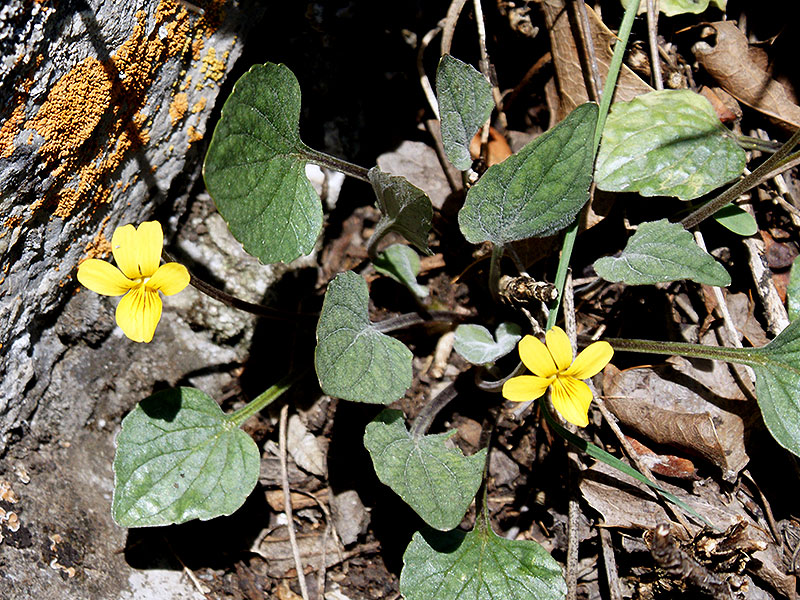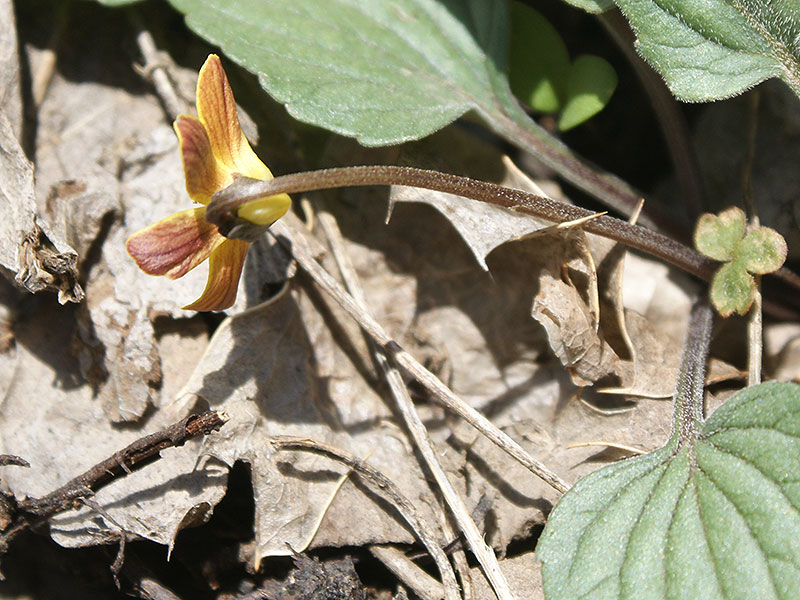Viola praemorsa / upland yellow violet
- yellow, 5-petals with purple “pencilling” on lower petals
- back sides up upper petals brown-ish
- leaves relatively thick, likely with many short hairs
- on dry, rocky soils, often with sagebrush or steep slopes
- soon after snowmelt; follows the snow up the mountains
Also known as: canary violet, Astoria violet, yellow montane violet, goosefoot violet
See also: Viola vallicola / sagebrush violet
Viola praemorsa is a rhizomatous perennial sometimes reaching a foot tall. Commonly seen growing in the company of sagebrush, this yellow violet is one of the earliest to bloom in the spring. Look for it soon after snow-melt on seemingly dry, gravelly soil. Its season follows the melting snow up the mountains.
The first thing you will probably notice is, of course, the small (e.g. 1/2 inch) but bright yellow flowers. These are borne singly on long, upright stems. Each has five petals, the lower three being “penciled” with brownish-purple lines (maroon veins) in the throat. The upper two (at least) usually have undersides that are purplish-brown.
Although almost all flowers will be open at some point, there may be others that are “cleistogamous”, i.e. they never open but still have both male and female organs and self-pollinate while closed. This is a common feature of violets in general. Although it is somewhat difficult to find good reasons for this behavior, it does seem to be directly related to plant size and not necessarily related to the availability of resources at the site.
Also like other violets, the upland yellow features exploding seed pods… if you want to collect seeds, you have to get there just before the explosions.
With respect to the leaves, the upland yellow has relatively (for a non-succulent) thick, fleshy blades. Borne on long petioles, they are lance shaped to oval with either pointed or rounded tips. They are longer and less heart-shaped than other species and may be more easily recognized if you keep in mind the habitat where they are. The blades are often densely coated with short hairs.
Interesting bits – Viola praemorsa is one of two violets grown for seed production at the Washington Corrections Center for Women (WCCW) as part of the Sustainability in Prisons Project. They are intended for revegetation of prairies in Washington. This species is either threatened or endangered in some areas to the west and north of us.
| Color | |
|---|---|
| Family | |
| Blossom size | |
| Inflorescence size | |
| Inflorescence type | |
| When? | |
| Where? |


